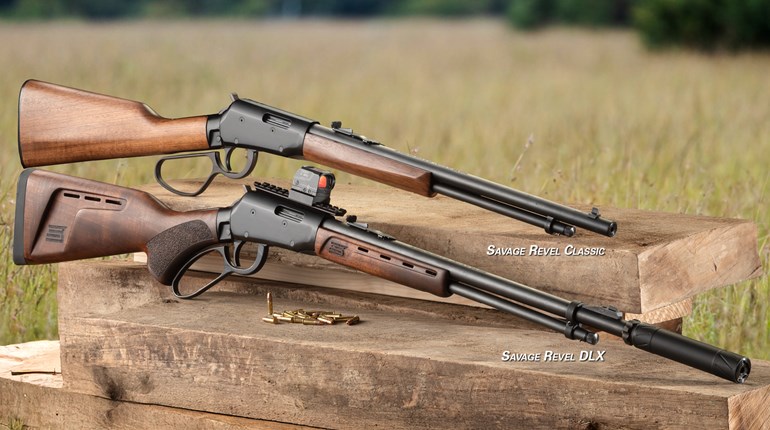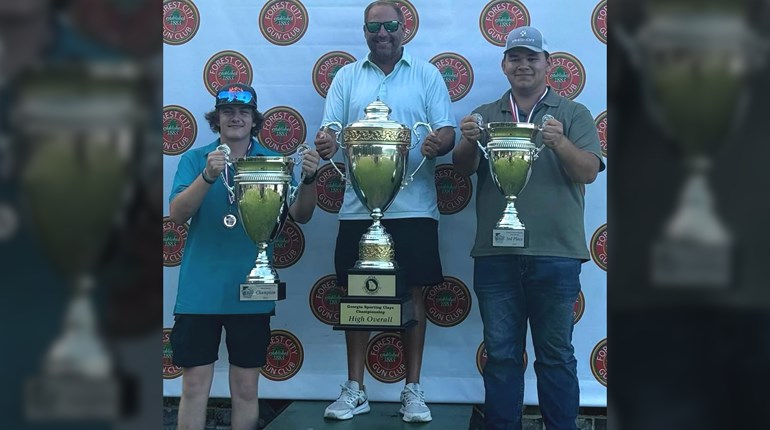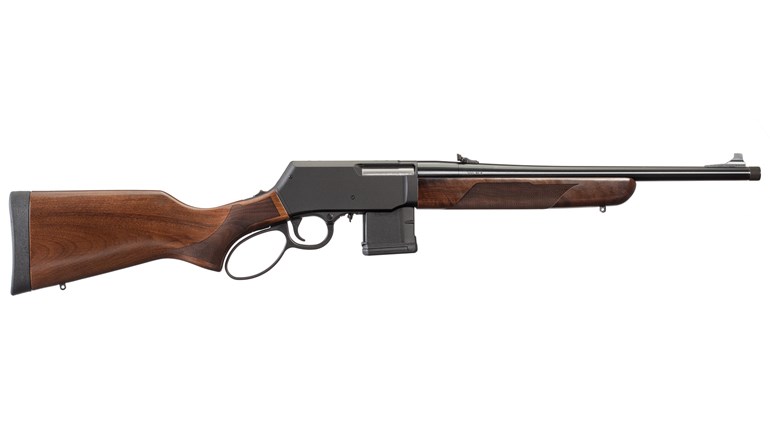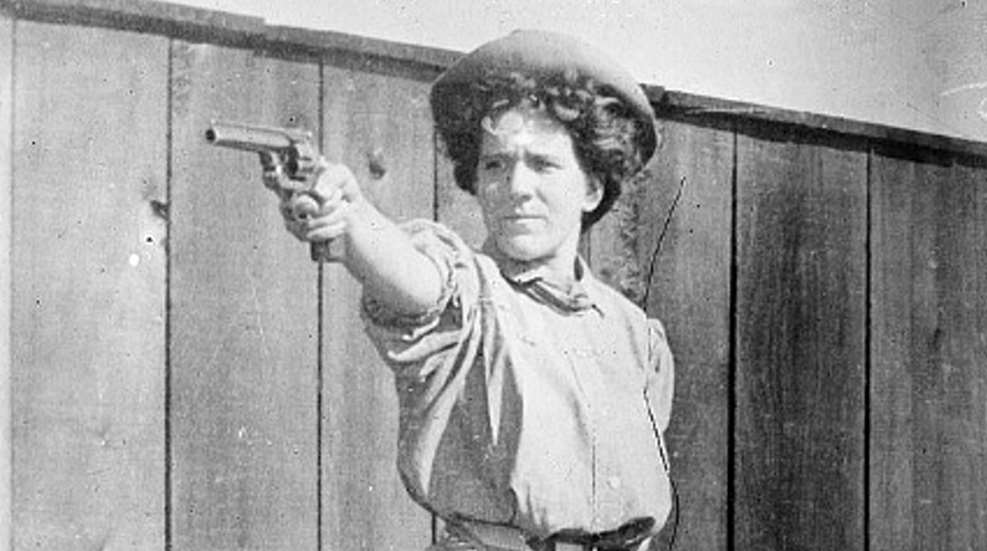
Above: Plinky Topperwein.
For the better part of the 20th century the major U.S. munitions companies, such as Winchester and Remington, fielded exhibition shooters to flog their products at state fairs, large gun clubs, and similar venues. They followed in the footsteps of famed western exhibition shooters that came of age during the 1880s.
It started in 1874 when the Irish Rifle Team, the premier team in the British Isles, crossed the Atlantic to take on the upstart U.S. team at Creedmoor. Some 8,000 spectators flowed out from nearby New York City to watch the event which was covered by all the major papers and the likes of Harper’s New Monthly Magazine, which illustrated the event with elaborate woodcuts.
In the wake of this international competition, exhibition shooters were soon populating vaudeville theaters, circuses, and fair sites, all claiming to be the “World’s Champion Rifle Shot.” In most cases it was a charade as there was no governing body, or even competition, to regulate the shooting of ashes from a cigarette held in an assistant’s mouth or buttons from his vest-tricks that were more often than not rigged by the charlatans on stage.
The first legitimate exhibition shooter to rise to prominence was a dentist by the name of William F. Carver who, much like controversial John “Doc” Holliday, gave up the chair and drill for the firearm and fame. Carver shot for six consecutive days in 1885 in New Haven, CT, breaking 64,881 glass balls tossed into the air out of 60,000. Most importantly, he established the rules for endurance exhibition shooting. To earn side money, he also developed a diving horse act. The act was continued by his family after his death and ran until pressure from animal rights groups forced its closure in the late 1970s.
Captain Adam H. Bogardus, a member of the National Trap Shooting Hall of Fame and author of Field, Cover, and Trap Shooting, was in heated competition with Carver for the world title and, in a series of 25 matches, was defeated by the dentist 19 times. Bogardus was an excellent wing shooter and displayed that skill in Madison Square Garden by shooting at 5,000 glass balls in eight hours and 20 minutes, breaking 4,844 of them. His two guns were alternately cooled in buckets of ice water.
Young Phoebe Ann Mosey, better known as Annie Oakley or “Little Sure Shot,” and Frank Butler were the next of the famous exhibition shooters. The pair married and toured together for many years with William Cody’s Buffalo Bill Wild West and Congress of Rough Riders of the World, performing before the crowned heads of Europe.
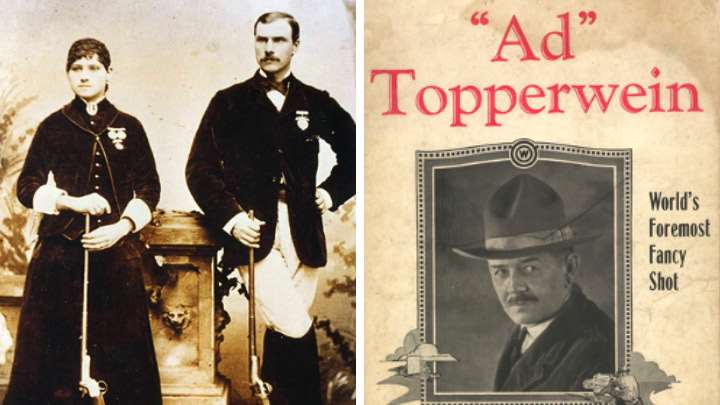
But all fade in comparison to the skill, showmanship, and longevity of the Topperweins. Adolph Toepperwein, whose name was later name Americanized to Topperwein, was the son of a gunsmith, born into the Schützen shooting culture of the central Texas hill country’s German enclave that also gave us Fleet Admiral Chester Nimitz and another famous shooter of sorts, Bonnie Parker. Early on, Adolph (Ad) was handling firearms and after seeing Doc Carver preform at Buffalo Bill’s show there was no stopping him. Ad apprenticed in vaudeville and the circus until 1901 when he was hired by the Winchester Repeating Arms Company as an exhibition shooter when he was 32. He would retire in 1951 at the age of 52 after an amazing half-century of performing—still at the top of the game.
Ad’s greatest claim to fame came in San Antonio, TX, between Dec. 13 and Dec. 22, 1907 when, following Carver’s rules, he used three 1903 model Winchester .22 semi-automatic to shoot at 72,000 2½-inch square hand thrown wooden blocks, missing only nine. His longest run without a miss was 14,540.
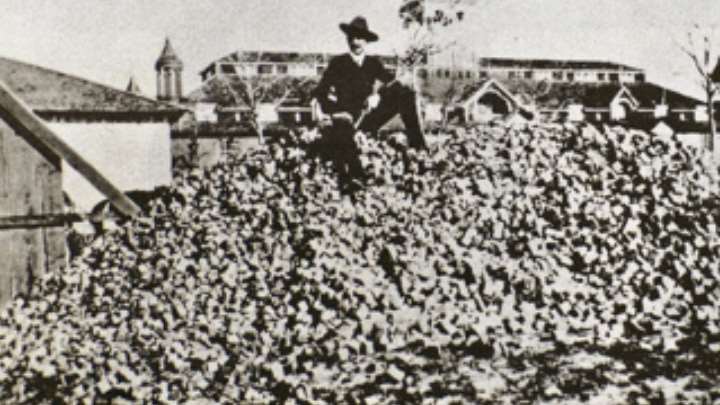
Perhaps his second greatest claim to fame involved breaking through the somber facade of President “Silent Cal” Coolidge. The 30th president was known for being, in typical New England fashion, taciturn. It has been said that at a reception a society matron said to him, “Mr. President! I have a bet that I can make you say three words. The president replied, ‘You lose.’”
Coolidge was in the audience when Ad placed his rifle on the ground, tossed two eggs into the air, did a somersault, picked up the rifle and shot the eggs before they hit the ground. “The president not only laughed, he threw up his arms, clapped his hands and roared,” reported Ad.
While taking a walk on the New Haven Green during a visit to the Winchester plant in 1902, Ad met Elizabeth Servaty, who happened to work at Winchester as a .22-cal. cartridge assembler. He was smitten and they soon married. The new Mrs. Topperwein had never handled a firearm but didn’t want to remain at home while Ad was on the road. He began teaching her how to shoot and she soon excelled. It was during her early shooting lessons that she acquired her nickname. As the story goes, when she began learning how to shoot tin cans were the targets of choice. When she scored a hit there was a "plinking" sound and she would confirm the hit with a joyous, "I plinked it," and quickly Ad began calling her “Plinky.”
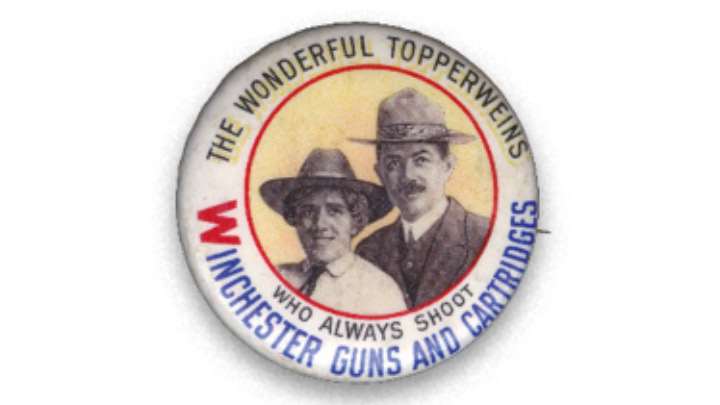
It wasn’t long before, like Oakley and Butler, they were touring together, making their professional debut as husband and wife in an appearance at the St. Louis World’s Fair in 1904. The Topperweins showcased their shooting prowess with rifles, shotguns, and pistols at a variety of targets. Ad reminisced:
“I taught her to shoot and soon after we were married Elizabeth was part of my act on my tours, shooting one-inch pieces of chalk from between my fingers, shooting empty shells off my fingers, and other feats of skill. Later on, she won the title of world's champion woman marksman. Winchester signed her too and we became widely known as the world's greatest shooting team—The Famous Topperweins. Man, those were the days! Whole towns turned out to see us perform; schools were closed in order that the kids might come and witness the crack shooting exhibitions.”
Plinky was an accomplished shotgun shooter, inducted into the Trapshooting Hall of Fame in its inaugural class along with Annie Oakley, who once told her, “Mrs. Top, you’re the greatest shot I've ever seen.” In 1904, she became the first woman to break 100 straight at trap, a feat she would repeat another 199 times. During exhibitions she would use a semiautomatic shotgun to break four targets thrown in the air simultaneously.
Ad and Plinky would shoot standing on their feet, heads, backs, or back on their feet after doing a roll along the ground. The marbles, chalk, metal discs, assorted vegetables, and eggs tossed into the air never stood a chance. Plinky’s specialty was shooting a pistol over her shoulder and sighting by looking into the mirror of her compact. Ad, a talented amateur artist, famously closed the act by sitting on a wooden ammunition crate and, using a .22 LR rifle as a brush, draw the profile of an Indian's head, Uncle Sam, or some other figure on an unmarked board or sheet of tin with bullet holes.
Plinky took time off from the act during the 1920s to raise their son, Laurence, later returning to the road. They toured military installation during WWII to raise morale, making their last tour together in 1943. Plinky passed away on January 27, 1945. At the time Ad was asked as to which Topperwein was the better shot Ad diplomatically responded, “Well, I was best at some feats and she was best at others. Reckon it was a toss-up between us.”
Ad went back on tour after Plinky’s passing until retiring in 1951, when Winchester kept him on the payroll as an advisor. In his retirement, he kept himself busy with long daily walks, running a shooting camp and giving free shooting lessons. Age crept up on him, his hearing succumbing to a lifetime of firearm reports as his eyesight dimmed. Ad Topperwein died on Mar. 4, 1962, and was laid to rest next to Plinky under a head stone engraved “Keep Your Powder Dry.”
Others have followed in their very large footsteps, Herb Parsons was Topperwein’s protégé and successor, promoting Winchester product for 30 years. A member of the Trapshooting Hall of Fame, he was noted for being able to toss seven clay targets into the air and dust them all before they hit the ground with a 12-gauge Winchester Model 12 pump action shotgun.
Parsons started with Winchester in 1929 as a salesman and was giving exhibitions at military bases early in World War II but soon found himself in the US Army Air Corps as a gunnery instructor. After being demobilized he quickly returned to Winchester. When Topperwein began looking for a successor he selected Parsons. The two men worked together, both believing that realism, not rigged acts, was the best way to please a crowd.
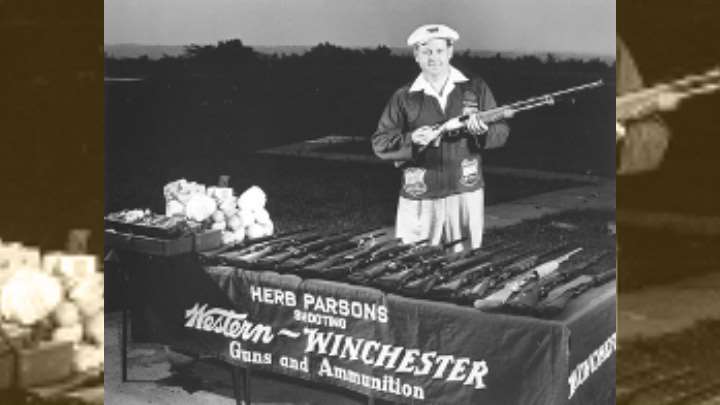
Parsons was a hunter and an international duck-calling champion, credited with originating the saying, “Go hunting with your boy today and you won’t have to hunt for him tomorrow.” Taking a bit of time away from the road he won the Grand American in 1954. His shows were lively with lots of pizzazz as he crisscrossed the country in a red Pontiac station wagon stuffed with his show supplies giving as many as 130 shows a year. A PA system was hidden in a giant Winchester shotshell attached to the roof from which he announced his coming shows. Unfortunately, this remarkable showman’s man’s life was altogether too short for, on Jul. 19, 1959, he suffered a heart attack and died at the age 51.
Soon after WWII, Remington hired Thomas Frye, a former Ohio State police officer and Army Air Corps gunnery instructor as a field representative. He was an outstanding trap and skeet shooter who went on to win eight Grand Americans and induction into the Trap Shooting Hall of Fame.
Fry made an assault on Topperwein’s endurance record in October of 1959, using three of the newly introduced Remington Nylon 66 .22 LR semi-automatic rifles to hit 100,004 out of 100,010 wooden block over a period of 14 straight days in October 1959. Crusty and combative Col. Charles Askins Jr., well-known firearms writer, examined photos of Frye’s attempt and noted that the man tossing the blocks was standing just off Frye’s left shoulder, a more advantageous position as Topperwein’s block tossers stood 25 to 30 feet ahead in accordance with Carver’s dictates. Never the less his remarkable display of endurance, timing, and accuracy was recognized by the Guinness Book of World Records.
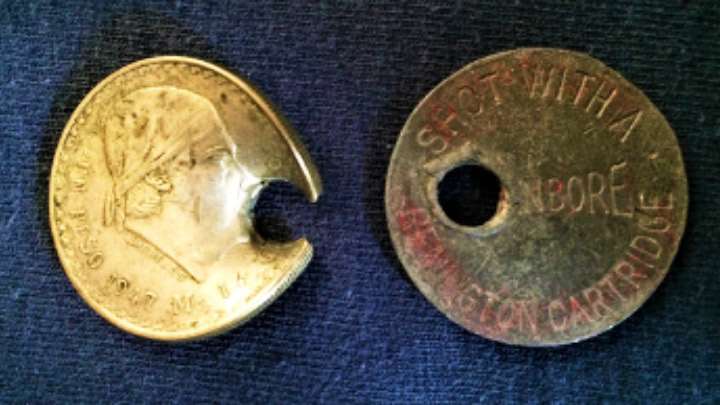
It was also reported that Frye had taken muscle relaxants to ease him through his marathon. Topperwein’s only relief for his sore muscles was having Plinky help him dress and occasionally bathe his face with cool water during shooting while a barber shaved him each morning. Even though he did not follow Carver’s rules, Frye received a gracious letter of congratulations from Topperwein who lauded him for “wonderful endurance and accuracy.”
Most recently Tom Knapp, sponsored by CZ-USA, Benelli and the Federal Ammunition Company, would put on 100 live shows a year and made numerous TV appearances. Knapp’s claim to fame is that he could hand toss nine clay targets into the air and using his sponsor’s semi-automatic shotgun break them all in less than two seconds. He followed that by breaking Parson’s record of seven dusted clay discs by breaking eight hand tossed clays with a pump shotgun in 1.87 seconds. Using a 12-ga. semi-automatic shotgun with extended magazine he broke 10 hand tossed clays in 2.2 seconds. He was active in person and on television through the mid 2010s and, like Parsons, died entirely too young at 63 in 2013.
There were others worthy of mention, Ed McGivern, author of the still in print Fast and Fancy Revolver Shooting, was sponsored by Smith and Wesson. His Guinness Book of Records feat of firing five shots in 0.57 seconds from a revolver set in 1932, when he was 57, still stands. Billy Hill of Remington, Dave Flanningan of Peters, and a third husband and wife team Ernie and Dot Lind represented Winchester-Western and for a while they carried on the great tradition but by the late 1960s exhibition shooting was a memory. (Note: While exhibition shooting as it was seems to have passed on, record-breaking shotgun shooters like Dave Miller of CZ-USA keep the tradition alive—Ed.)
The great exhibition shooters of the 20th century are now all gone. Today Smith & Wesson, Colt, Shell Shock, Springfield, Eley, Lapua and many more companies sponsor competitive shooting teams to popularize and promote their products—making it unlikely we shall ever see the likes of the great exhibition shooters of the past again.
Read more articles by Hap Rocketto:














